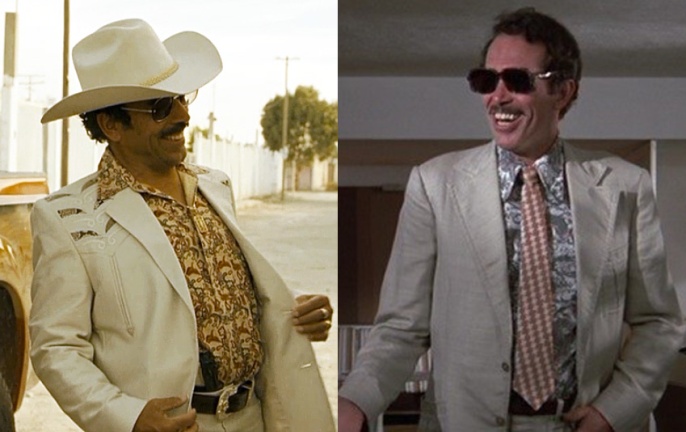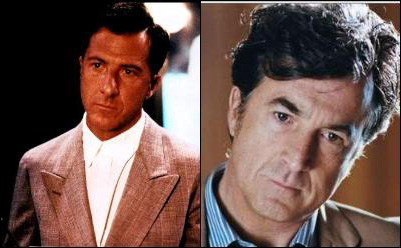BY ADAM FOX
Three thoughts cross my mind when watching 2008’s cult crime-comedy In Bruges:
- I remember when Colin Farrell was supposed to be the new action mega-star of our time;
- I really need to visit Belgium, and;
- I’m embarrassed how writer/director Martin McDonagh’s depiction of American tourists is regrettably and painfully spot-on.
Which begs the question: Why is this film perpetually in the monolithic wasteland known as a department store’s $5 “bargain bin?” That space is relegated to future installments of the Air Bud franchise, with the vacant-eyed golden performing in increasingly obscure sports. Perhaps the price tag is an accessible way to ensure that the film finds a home in every cinephile’s library. Either way, In Bruges is an excellent, tidy representation of the assassin genre, and is refreshingly cerebral in comparison with its like-minded counterparts.
Rookie hitman Ray (Farrell) and his partner Ken (Brendan Gleeson) are sent off to the quaint medieval town of Bruges, Belgium by their crime boss Harry (Ralph Fiennes) after Ray mistakenly kills a child in an operation gone awry. They’re confined to a tiny, inconspicuous inn and told to wait for further instruction from Voldemort himself before departing. Ken is the glass-half-full vet who attempts to enjoy all of the cobblestone-covered offerings in this “fucking fairy tale” of a city, while Ray, rather ironically, despises Bruges and all that it represents. In what is essentially Disney’s Fantasyland spread over a more generous acreage, it’s humorous to witness Ray’s gigantic axe to grind with the innocently charming Bruges.
Ray, at the behest of optimist Ken, begrudgingly tries to make the most of his time stuck in this desolate hell-hole and ends up meeting beautiful Belgian Chloë (Clémence Poésy) on a movie set not dissimilar to Eyes Wide Shut, but with little people amongst the Venetian masks. On an ensuing date, Ray is hilariously up front about his career choice and is somewhat nonplussed when Chloë reveals hers—a production assistant who also deals drugs (an important position undoubtedly high up on the Hollywood pecking order). Ray’s gloomy disposition changes drastically when in Chloë’s company. But he still fucking hates Bruges.
(SPOILER ALERT, following paragraph only:)
After some time passes, Ken receives the call from Harry/He-Who-Must-Not-Be-Named to take Ray out on a boat and Fredo Corleone him. Harry is a complicated and neurotic character who also happens to be a man of principle, and decides that Ray must face justice for shooting a child, accident or not. Ken just can’t pull the trigger on his partner and, after attempting to get Ray out of Dodge completely, incurs the wrath of Harry who decides to head into town and deal with the situation himself. What results is an epically gorgeous beer-battered shoot-‘em-up through the windy, narrow streets of Bruges.
The dialogue in In Bruges is particularly smart, snappy and positively Irish, driven by the strength of Farrell, Gleeson and Fiennes’ performances. There’s a moral gravity associated with the choices the characters make throughout the film, interspersed with sweeping commentary on ethics. But each of the three lead actors look like they’re having a fucking blast filming the scenes, which in turn makes it extremely enjoyable to watch, and much easier to swallow the larger story arc the film offers. In Bruges isn’t the reel companion piece to Dostoevsky’s Crime and Punishment or anything, but there is a little more at stake than just the lives of expendable characters the audience doesn’t actually care about (as crime movies can often stray).
Bruges, Belgium is obviously a major player and the unsung hero of the film, occupying significant real estate in the story without turning it into some type of travel documentary. I’m not exactly sure how an unassuming little village like Bruges came to be the consensus centerpiece of a crimedy, but it works beautifully. Eschewing more common European locales like London, Paris and Venice affords it an immense amount of unexplored flavor. The scenes themselves aren’t too unfamiliar for fans of the genre, but they’re somehow different and more memorable with a background of belfries and bridges that closely resemble Arthurian legend.
In Bruges is viciously rewatchable, enormously entertaining, and Colin Farrell’s crowning achievement over a long-spanning career in films wholly inferior to this. There’s something very vintage about the character- and dialogue-driven In Bruges, easily dismissed by the short attention-spanned Michael Bay adherents but coveted by the jaded critic-codgers like myself. It tells a story thoroughly yet succinctly, hitting all the right strides in making its comedic moments actually funny and its action moments tense.
There’s a great chance you watched this back in 2008 as it was released along with a healthy amount of fanfare for a movie of its size, but it stands the test of time incredibly well and was even better than I remember it being. In Bruges is proof that if you want to keep your finger on the pulse of adrenaline-seeking theatergoers, you don’t necessarily need to beat them over the head with CGI.
IMDb: 8.0
GRADE: A –

























































